Environmentally Friendly Transportation
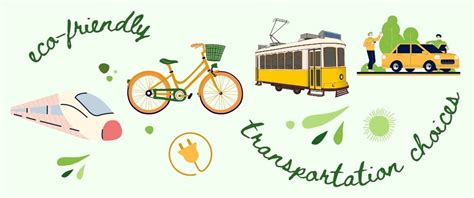
In an era where sustainability and environmental consciousness are at the forefront of global discussions, the concept of environmentally friendly transportation has emerged as a crucial aspect of our daily lives. With the world grappling with the challenges of climate change and the need to reduce carbon emissions, the way we commute and travel has become a key focus for innovation and improvement. This article delves into the world of eco-friendly transportation, exploring the various modes, technologies, and initiatives that are shaping a greener future.
The Rise of Sustainable Transportation: A Global Imperative
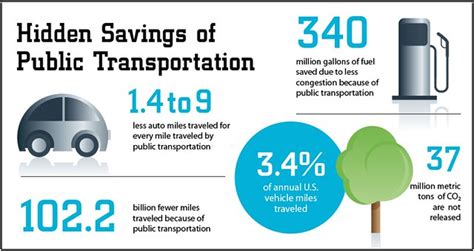
The transportation sector plays a significant role in global carbon emissions, contributing to approximately 27% of total energy-related CO2 emissions, according to the International Energy Agency (IEA). This alarming statistic has spurred a global movement towards sustainable transportation solutions, aiming to mitigate the environmental impact of our daily commutes and long-distance travels.
The need for environmentally friendly transportation is not just an environmental imperative; it is also a matter of public health, economic sustainability, and social equity. By transitioning to cleaner modes of transport, we can reduce air pollution, improve public health, create more efficient and resilient cities, and ensure that the benefits of transportation are accessible to all.
Electric Vehicles: Powering a Green Revolution
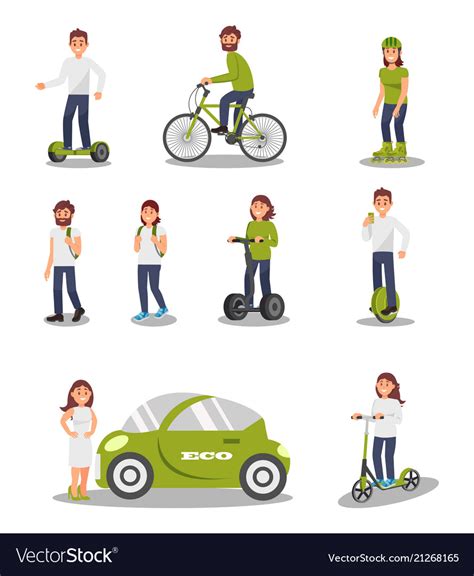
One of the most prominent developments in the realm of eco-friendly transportation is the rise of electric vehicles (EVs). These vehicles, powered by electricity rather than fossil fuels, have gained significant traction in recent years, thanks to their numerous environmental and economic benefits.
The Benefits of Electric Vehicles
- Reduced Emissions: EVs produce zero tailpipe emissions, significantly reducing air pollution and contributing to cleaner, healthier environments. According to a study by the Union of Concerned Scientists, an EV produces 50% fewer greenhouse gas emissions than a conventional gasoline car, even when accounting for electricity generation.
- Energy Efficiency: Electric motors are inherently more efficient than internal combustion engines, converting over 80% of the energy stored in the battery to power the vehicle, compared to just 20% for a traditional gasoline engine.
- Lower Operating Costs: EVs typically have lower maintenance and fueling costs, as they have fewer moving parts and do not require regular oil changes or expensive repairs associated with internal combustion engines.
- Quiet and Comfortable Ride: Electric vehicles operate with minimal noise, providing a quieter and more pleasant driving experience for both the driver and those in the vicinity.
The Global Shift Towards EVs
The global adoption of electric vehicles is gaining momentum, with several countries and regions implementing policies and incentives to encourage their use. Here’s a glimpse at the EV landscape across the world:
| Region | EV Sales (2022) | Growth Rate (2021-2022) |
|---|---|---|
| China | 6.6 million | 150% |
| Europe | 2.4 million | 63% |
| United States | 785,000 | 57% |
| India | 25,000 | 250% |
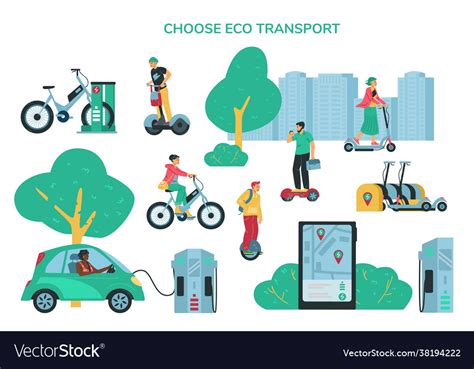
These numbers highlight the rapid growth of the EV market, with China leading the way in terms of sales and adoption. The growth rates across different regions also indicate a promising future for electric vehicles, as more and more consumers and industries embrace this sustainable mode of transportation.
Sustainable Public Transportation: Moving Towards Efficiency
While individual vehicles, such as electric cars, play a crucial role in sustainable transportation, the focus on public transportation systems is equally important. Efficient and well-designed public transport networks can significantly reduce the number of vehicles on the road, thereby decreasing traffic congestion, air pollution, and carbon emissions.
Key Strategies for Sustainable Public Transport
- Electric Buses and Trains: Many cities and regions are transitioning to electric or hybrid public transport vehicles, including buses and trains. These vehicles not only reduce emissions but also provide a quieter and more comfortable experience for commuters.
- Integration of Active Transport: Encouraging active transportation modes like walking and cycling, along with the development of dedicated infrastructure, can reduce the reliance on motorized transport and promote healthier lifestyles.
- Smart Mobility Solutions: The integration of technology and data analytics can optimize public transport systems, making them more efficient, reliable, and responsive to passenger needs. This includes real-time tracking, dynamic routing, and demand-responsive services.
- Low-Carbon Fuels: For regions where full electrification is not yet feasible, the use of low-carbon fuels, such as biodiesel or renewable natural gas, can help reduce emissions from public transport vehicles.
Case Study: Copenhagen’s Sustainable Transport Revolution
Copenhagen, the capital of Denmark, has become a global leader in sustainable transportation. The city has implemented a range of initiatives to encourage cycling, improve public transport, and reduce car usage. As a result, Copenhagen now boasts one of the highest rates of bicycle usage in the world, with over 62% of residents cycling daily.
The city's comprehensive approach includes the development of an extensive network of dedicated bike lanes, the introduction of bike-sharing systems, and the integration of cycling infrastructure with public transport hubs. Copenhagen's success highlights the transformative power of a multi-modal, sustainable transportation strategy.
Alternative Fuels and Advanced Technologies
Beyond electric vehicles and public transport, the quest for environmentally friendly transportation extends to the exploration of alternative fuels and innovative technologies.
Hydrogen Fuel Cell Vehicles
Hydrogen fuel cell vehicles (FCVs) represent a promising alternative to traditional internal combustion engines. These vehicles use hydrogen gas to power an electric motor, producing only water vapor as a byproduct. While the technology is still in its early stages, several major automakers are investing in the development of FCVs.
The benefits of hydrogen fuel cells include:
- Zero Emissions: FCVs produce no tailpipe emissions, making them an attractive option for reducing air pollution.
- Rapid Refueling: Hydrogen refueling can be significantly faster than charging an electric vehicle, addressing the range anxiety associated with EVs.
- Longer Range: Hydrogen fuel cells can provide a longer driving range than most electric vehicles, making them suitable for long-distance travel.
Biofuels and Renewable Energy Sources
Biofuels, derived from renewable biological sources like crops or waste, can be used as an alternative to traditional fossil fuels. These fuels can be blended with gasoline or diesel to reduce emissions and increase the sustainability of internal combustion engines.
Additionally, the use of renewable energy sources, such as solar and wind power, for electric vehicle charging and public transport systems, further enhances the environmental credentials of these modes of transport.
Conclusion: A Sustainable Transportation Future
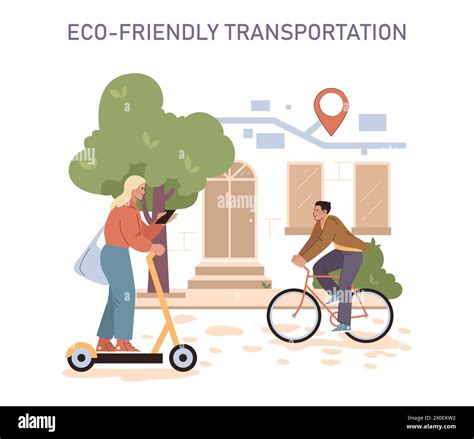
The journey towards environmentally friendly transportation is an ongoing process, with new technologies, policies, and initiatives continually emerging. From the rapid growth of electric vehicles to the transformative power of sustainable public transport, we are witnessing a paradigm shift in how we move and commute.
As we continue to innovate and embrace sustainable transportation solutions, we not only reduce our environmental impact but also create a more equitable, healthy, and resilient world. The future of transportation is bright, and it is one that we can all be a part of, driving towards a greener and more sustainable tomorrow.
FAQ
What are the main benefits of electric vehicles (EVs) over traditional gasoline cars?
+Electric vehicles offer several advantages over traditional gasoline cars. Firstly, they produce zero tailpipe emissions, reducing air pollution and contributing to a cleaner environment. Secondly, EVs are more energy-efficient, with electric motors converting a higher percentage of energy to power the vehicle. Additionally, they have lower operating costs due to reduced maintenance needs and cheaper refueling.
How does the integration of active transport, like cycling and walking, contribute to sustainable transportation?
+Integrating active transport modes, such as cycling and walking, into transportation systems reduces the reliance on motorized vehicles, leading to lower traffic congestion and reduced air pollution. It also promotes healthier lifestyles and can enhance the overall well-being of communities.
What are some challenges associated with the widespread adoption of hydrogen fuel cell vehicles (FCVs)?
+While hydrogen fuel cell vehicles offer significant environmental benefits, their widespread adoption faces challenges. These include the need for extensive infrastructure development, such as hydrogen refueling stations, and the high costs associated with producing and storing hydrogen. Additionally, the technology is still evolving, and further research and development are required to make it more accessible and cost-effective.



